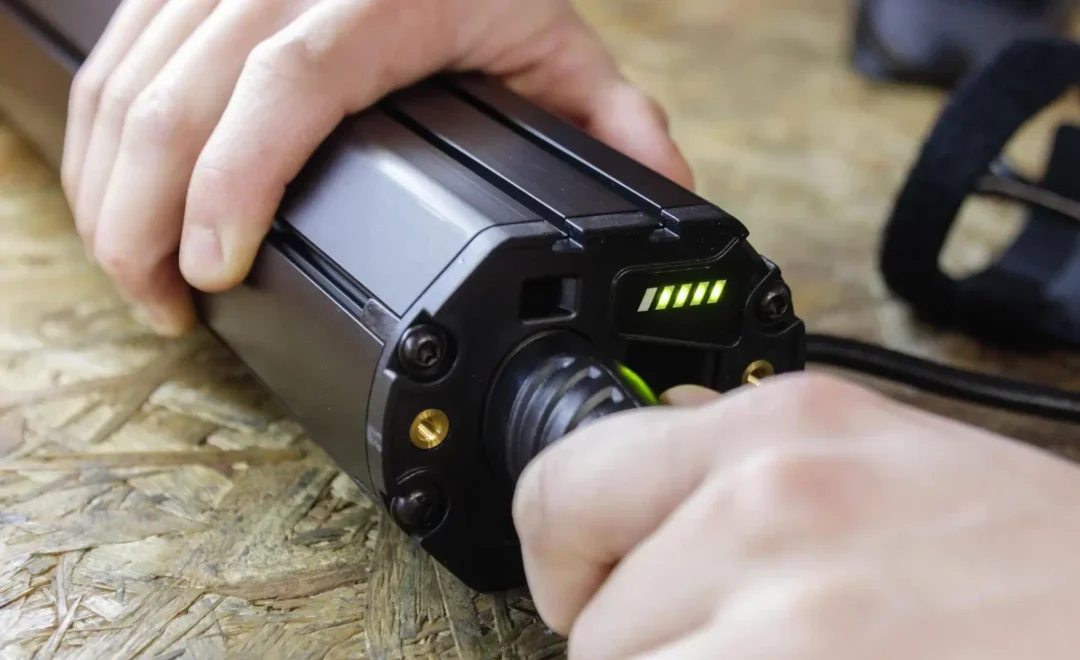
I don’t know about you, but I rely on my ebike to get around town. It’s an awesome way to avoid traffic, get exercise, and reduce my carbon footprint.
The only problem is that ebikes need regular charging to keep running.
So what happens when your ebike battery runs out of juice and you don’t have the charger? Or maybe the charger stopped working?
It’s a frustrating situation for any ebike owner.
In this article, I’ll walk you through the possible options for charging an ebike battery without the original charger.
While not ideal, there are some creative workarounds that just might get you rolling again!
The short answer is yes, it is possible to charge an ebike battery without the original OEM charger in some cases.
But it’s not necessarily recommended since using an improper charger can damage the expensive lithium-ion battery.
Every ebike battery is designed to work with a specific charger that provides the proper voltage, amperage, and charging algorithm.
So using a different charger is RISKY business.
With that said, desperate times call for desperate measures! In certain situations, MacGyvering a way to charge up your dead ebike battery can help you out in a pinch.
You just need to be very careful and do your research to avoid causing permanent harm to the battery.
The options for ghetto-charging your ebike include:
I’ll explain each method in detail throughout this article.
While none are a perfect substitute for the original OEM charger, they may work to resuscitate your battery when you’re stuck.
Just use proper caution!
Replacing a lost or broken e-bike charger seems like an easy fix.
However, not just any charger will work safely with your ebike battery.
Batteries are designed for specific voltages and charging rates.
Too much voltage or current will overload the battery and potentially cause permanent damage.
That said, it is sometimes possible to use a compatible replacement ebike charger from the same brand.
For example, if you have a Bosch ebike motor, a charger for a different Bosch model may work to charge your battery in a pinch.
The key factors to check are:
Using a mismatched charger that doesn’t meet all these criteria can overload and fry the battery cells.
At best it will cut your battery’s lifespan, and at worst it can cause a fire or explosion.
Not fun!
So in summary, replacing your ebike charger with a compatible model may work in a pinch, but proceed with extreme caution.
Consulting an ebike technician is wise if possible.
Alright, let’s get creative!
If you don’t have a compatible replacement ebike charger available, there are a couple ways you may be able to ghetto-charge your ebike battery:
You essentially need a power supply that can provide your ebike voltage (either 36V or 48V typically) and sufficient amperage.
Some options are:
Be extremely careful that the charger you use matches the voltage of your ebike battery exactly.
Even a slight over-voltage can damage lithium batteries.
This is risky but may work in a true emergency if you monitor voltage and charging progress continuously.
With the proper adapter cables, it’s possible to charge an ebike battery directly from a car, solar panel, or other DC power source that can supply enough voltage and current.
Cigarette Lighter – Using your car’s cigarette lighter, you may be able to scavenge enough 36V or 48V DC power to charge an ebike battery very slowly.
Car Battery – You can charge directly from a 12V lead-acid car battery using a DC-DC converter that steps up the voltage.
Again, this will charge slowly.
Solar Panel – A solar panel setup with a charge controller that can supply your ebike voltage can charge the battery directly if adapted properly.
Generator – A gas generator with DC output around 36V-48V may be able to charge your ebike battery as well.
These sources provide lower and less controlled charging current compared to an ebike charger.
So the charging process will be slow.
But in an emergency, they could offer you a lifeline!
It’s generally not recommended to plug an ebike directly into a standard 110-120V AC wall outlet.
Why?
Because your ebike battery requires DC voltage of 36V or 48V, much higher than the 120V AC from a household outlet.
That said, with the right power converter, you may be able to charge slowly and carefully from a regular outlet.
Here’s how:
Again, proceed carefully and cautiously if attempting to charge an ebike battery from a wall outlet.
It’s a hacky workaround that should only be used sparingly.
You don’t want to risk damaging your expensive battery!
In a pinch, you may be able to use a standard 12V lead-acid car battery to charge your ebike’s lithium battery.
Here are the steps:
This method will charge an ebike battery slowly over many hours.
But it could get you rolling again in a pinch if done carefully.
Just be extremely cautious working with car batteries, which contain toxic lead acid!
Well there you have it – a few MacGyver ways to potentially revive your ebike battery without the proper OEM charger.
While not recommended for regular use, these ghetto-charging methods may just get you out of a jam if you find yourself stranded with a dead battery.
My advice is to avoid needing to improvise like this in the first place!
Always keep your original high-quality ebike charger handy.
Never modify connectors or cables. And learn how to maximize your battery’s lifespan.
With proper care and maintenance, your ebike battery should provide many years of reliable service.
But if you do end up in a tricky situation with a depleted battery and no functional charger, the above workaround options are worth considering in a cautious and limited capacity.
Just be extremely careful, patient, and attentive when attempting to charge an ebike battery without the correct equipment.
I hope these tips give you some peace of mind that you have a few options if your ebike battery dies at an inopportune time.
